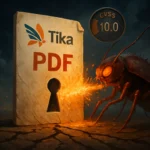Cybersecurity researchers at Cisco Talos have raised alarms about the misuse of MacroPack, a framework originally designed for red team operations, now being exploited by malicious actors to deploy harmful payloads. This development underscores the ongoing challenge in cybersecurity: tools created for defense can often be repurposed for attacks.
Understanding MacroPack: A Double-Edged Sword
MacroPack, a proprietary tool developed by French developer Emeric Nasi of BallisKit, was initially intended to help red teams simulate hacker behavior. Its features include antivirus evasion, reverse-engineering protection, and the ability to create obfuscated payloads for documents with embedded, inconspicuous VB scripts. While a community version exists, it’s no longer supported, leaving the professional version as the primary tool in circulation.
Characteristics of MacroPack-Generated Malicious Documents
Cisco Talos analysts have identified several distinguishing features of documents created using MacroPack:
- Function and variable renaming based on Markov chains
- Removal of comments and unnecessary whitespace to reduce detection during static analysis
- String encoding
- Presence of four non-malicious VBAs associated with the professional version of the framework
These characteristics make MacroPack-generated documents particularly challenging to detect and analyze, contributing to their effectiveness in cyberattacks.
Global Reach and Diverse Applications
Researchers have observed MacroPack-generated malicious documents uploaded to VirusTotal from various countries, including the United States, Russia, China, and Pakistan. The diversity in document content, attack complexity, and infection vectors suggests that multiple hacking groups are leveraging this tool for their operations.
Infection Process and Payload Delivery
When a victim opens a MacroPack-generated document in Microsoft Office, it triggers a first-stage VBA code. This code then downloads a malicious DLL, which establishes a connection to the attacker’s command and control server. This multi-stage approach helps evade detection and increases the attack’s chances of success.
Notable Malware Payloads Delivered via MacroPack
Cisco Talos researchers have identified four major clusters of malicious activity associated with MacroPack abuse, including the deployment of sophisticated malware such as:
- Havoc: A post-exploitation command and control framework
- Brute Ratel: An advanced adversary simulation tool
- PhatomCore: A relatively new and evolving malware strain
The use of MacroPack to deliver these payloads demonstrates the tool’s versatility and the serious threat it poses when in the wrong hands. Of particular concern is the deployment of Brute Ratel, which has been described by security researchers as “uniquely dangerous” due to its ability to evade detection by many EDR and antivirus solutions. This evasion capability has made Brute Ratel an attractive alternative to other well-known hacking tools among cybercriminals.
The misuse of MacroPack serves as a stark reminder of the constant arms race in cybersecurity. As defenders create more sophisticated tools for testing and improving security, attackers inevitably find ways to exploit these same tools. This underscores the critical need for ongoing vigilance, regular security updates, and a multi-layered approach to cybersecurity that can adapt to evolving threats. Organizations must stay informed about these developments and continuously refine their defense strategies to protect against the ever-changing landscape of cyber threats.






